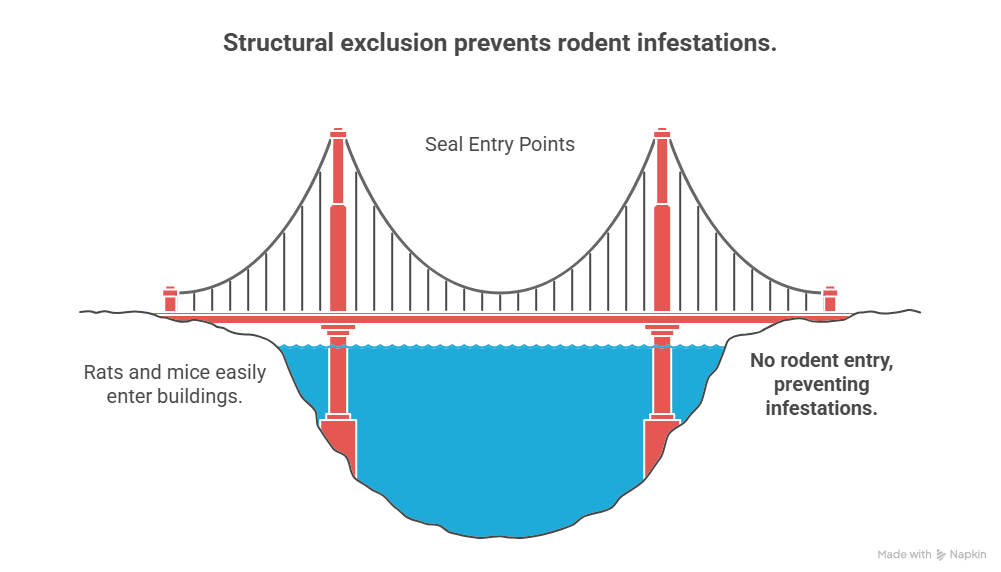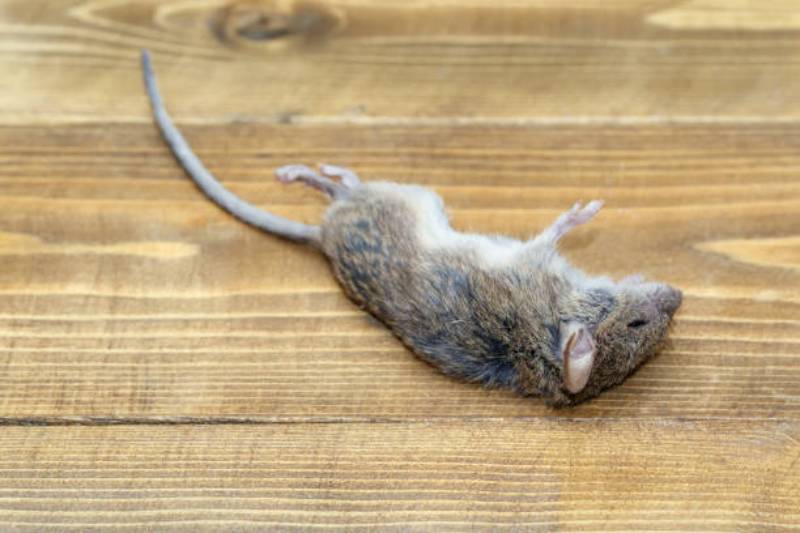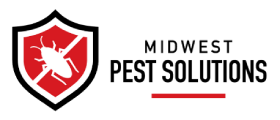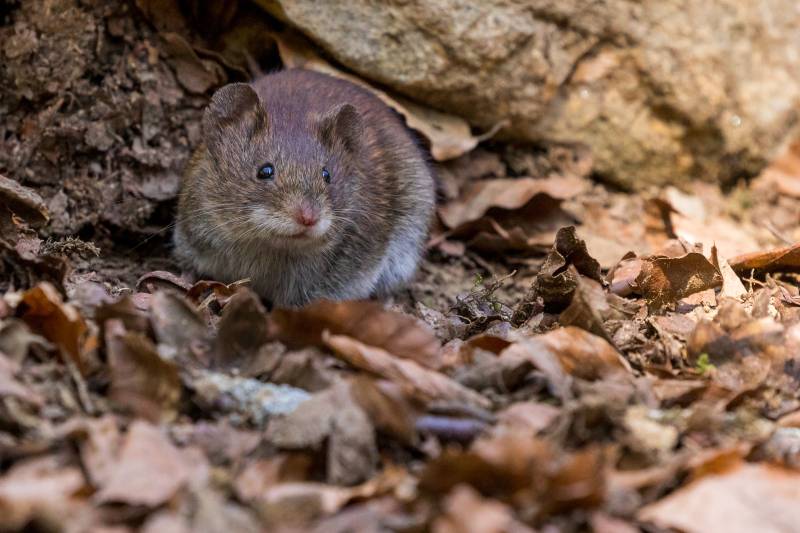Chicago’s Rodent Problem Isn’t New , But the Solutions Are
If you’ve lived in Chicago for more than five minutes, you know the city doesn’t mess around when it comes to rats and mice. In fact, the Windy City has been crowned the “rattiest city in America” more than once, a title no one’s thrilled to hold. But what makes today’s battle against rodents different from past efforts? Innovation. The city’s pest control experts are rewriting the rules, trading in toxic chemicals and old-school traps for smarter, safer, and more sustainable strategies.
Midwest Pest Solutions is leading that charge, tapping into a new wave of rodent removal technology tailored specifically for urban environments like Chicago’s. From eco-friendly fertility control to AI-informed tracking systems, the city’s rodent control tactics are becoming smarter by the year.
Let’s dive into the first wave of groundbreaking techniques that are changing the game in Chicago pest control.
Integrated Pest Management: The Gold Standard of Modern Rodent Control
What Is IPM, Really?
Integrated Pest Management (IPM) isn’t just some buzzy acronym. It’s a science-based, eco-conscious strategy that replaces one-size-fits-all extermination with a layered, holistic approach. Think of it as the difference between putting out a fire and fireproofing your home.
IPM starts with thorough inspection, followed by the strategic use of non-toxic control methods like exclusion (more on that in a bit), monitoring, humane traps, and targeted baiting. Only when absolutely necessary do professionals resort to chemical solutions, and even then, they’re often plant-based or pet-safe.
Why It Works in Chicago
Chicago’s urban sprawl, historic infrastructure, and tightly packed neighborhoods make it a rodent paradise. IPM is ideal here because it’s proactive and adaptable. A single trap won’t solve a multi-unit rodent problem, but IPM, applied consistently, just might.
Companies like Midwest Pest Solutions specialize in IPM programs that are tailored for dense urban areas. Their solutions are designed to work within the unique environmental, social, and structural fabric of Chicago communities.
Rat Birth Control Is Real, And It’s Working
Meet Evolve: The Game-Changer in Wicker Park
Yes, you read that right. One of the most innovative tools in Chicago’s rodent control arsenal is rat birth control. In neighborhoods like Wicker Park and Bucktown, the city is piloting a product called Evolve, which uses cottonseed oil to disrupt the reproductive cycle of rats.
Unlike poisons, Evolve doesn’t lead to slow, painful deaths, or worse, secondhand kills of pets or predatory wildlife. It simply reduces fertility over time, bringing down the population without harming the ecosystem.
Why Residents Are On Board
It turns out most Chicagoans would rather not have dead rodents decomposing under their porches. Humane methods like Evolve align with the city’s growing environmental awareness and desire for long-term solutions. The shift toward birth control shows a major cultural change in how we define “control”, not through eradication, but through balance.
City-wide data has shown a gradual decrease in sightings in pilot zones, reinforcing that slow and steady (and humane) really might win the rat race.
Advanced Traps and Smart Baiting: Moving Beyond the Snap Trap
The Problem With Traditional Traps
Snap traps and sticky pads? They’re outdated and inhumane. They don’t discriminate between species, and they pose risks to kids and pets. Plus, they barely scratch the surface of a full-blown infestation.
The Modern Solution
Today’s pest pros are rolling out next-gen bait stations equipped with tracking powder, species-specific lures, and even remote monitoring capabilities. These tools help identify nest locations and movement patterns, allowing for precision targeting. No guesswork. No wasted product.
These aren’t your granddad’s traps, they’re data-driven devices that can reduce rodent signs by up to 90% in a matter of days. That’s the kind of turnaround time that landlords and business owners in neighborhoods like Logan Square are praising.
One standout example? Midwest Pest Solutions has developed a trapping protocol that uses scent trails and infrared mapping to pinpoint entry points and hot zones, drastically improving efficiency.
Sealing the Fortress: Structural Exclusion as a First Line of Defense


What Is Structural Exclusion?
If rats can’t get in, they can’t take over. It’s that simple.
Structural exclusion involves identifying and sealing all potential rodent entry points, no matter how small. Rats can squeeze through holes the size of a quarter, and mice? Just a dime. So, pest pros need to think like the enemy.
Tools of the Trade
High-resolution thermal cameras, fiber-optic scopes, and airflow sensors are used to identify weak points in buildings. Then technicians reinforce these areas using:
- Steel mesh
- Rodent-proof caulks
- Door sweeps
- Pipe collars
It’s not glamorous work, but it’s highly effective. In fact, exclusion is now considered a cornerstone of modern rodent control, especially in multi-family buildings where repeated infestations are common.
Midwest Pest Solutions has built its reputation on these exclusion techniques. Their team uses advanced inspection tools to map and block every possible access point, creating a sealed perimeter that’s nearly impossible for rodents to breach. You can learn more about their process here.
Insulation Replacement: The Hidden Hero of Rodent Prevention
When Rodents Leave Behind More Than Droppings
Rodents don’t just chew wires and steal food, they destroy insulation. Worse, their nesting behavior can turn attics into allergen-filled, bacteria-laden messes. That’s why savvy pest control companies now offer insulation replacement as part of their rodent remediation services.
The Modern Upgrade: Borate-Treated Cellulose
This eco-friendly insulation material is resistant to pests, mold, and fire. It’s also a major step up in energy efficiency, helping homeowners cut heating costs while also saying goodbye to rodents for good.
Replacing attic insulation isn’t just about cleanliness, it’s about resetting the entire ecosystem of the home. A rodent-free attic means a rodent-free future.
Smarter Surveillance: The Data Revolution in Rodent Control
How Tech Is Changing the Way We Track Rats
Traditional rodent control was a reactive game: wait for a homeowner complaint, then set traps. But in 2025, pest control is leaning on data-driven surveillance to preempt infestations before they spiral.
Companies across Chicago are now installing motion-activated cameras, infrared trail monitors, and sensor-equipped bait stations to track rodent behavior in real time. These systems collect and store data on movement patterns, entry frequency, and even rodent species , all of which help professionals craft hyper-specific treatment plans.
A recent study published in Nature found that data modeling not only improved control outcomes but reduced pesticide use by 40%, reinforcing that intelligence-driven pest control is more effective and sustainable.
Precision Planning for Diverse Neighborhoods
Chicago is an urban mosaic. What works in River North may not be viable in Little Village. Socioeconomic differences, housing density, and even waste management practices affect infestation rates. Data allows companies to customize their approach by zip code, building type, or historical infestation frequency, something a manual inspection alone could never achieve.
Community Involvement: A Vital Piece of the Rodent Puzzle
Why Rodent Control Isn’t a One-Man Job
No matter how advanced the technology, if your neighbor’s backyard is a rodent buffet, your home won’t stay pest-free for long. That’s why community engagement is now a core part of rodent control strategies in neighborhoods like Englewood, Hyde Park, and Humboldt Park.
Chicago’s official rodent control division has implemented city-wide reporting apps, coordinated baiting efforts, and neighborhood cleanup campaigns. By encouraging residents to report sightings and maintain clean environments, the city fosters a culture of accountability and collective action.
Public-Private Partnerships Matter
Innovative exterminators often partner with local councils, schools, and businesses to create what’s essentially pest control coalitions. These groups share data, map out hot spots, and fund exclusion or sanitation efforts in shared spaces.
One impressive collaboration is taking shape between pest control providers and green retrofitting services like Green Attic, which specialize in rodent-proofing attics during insulation upgrades. This crossover between pest control and sustainable construction is something we expect to see more of in the coming years.
Real-Time Monitoring: A 24/7 Defense System
Monitoring Isn’t Optional Anymore
The most effective pest control plans today don’t stop at removal, they include continuous, tech-enhanced monitoring. Chicago firms are now integrating remote alert systems that notify technicians of rodent activity as it happens. These wireless sensors, often installed near known entry points or high-traffic zones, provide updates without the need for constant in-person visits.
This type of “smart surveillance” is a game-changer for large facilities like food warehouses, restaurants, and schools. But more companies are adapting it for residential clients too, especially in neighborhoods with chronic rodent issues.
Why Warranties Are the New Norm
In tandem with remote monitoring, companies are offering long-term maintenance plans and warranties. Midwest Pest Solutions, for example, provides follow-up inspections and exclusion touch-ups as part of its rodent protection packages. These services shift the business model from emergency response to ongoing protection.
Instead of calling in the cavalry when rats return, you’re investing in an invisible shield that’s always working in the background.
Behavioral Baiting: Outsmarting the Smartest Rodents
Rats Are Smarter Than You Think
Here’s something unsettling: urban rats are showing signs of behavioral resistance. They’re learning to avoid traps, ignore bait, and navigate complex human environments better than ever. That’s why professionals are now applying behavioral science to their baiting strategies.
Using data from surveillance, they tweak bait placement based on how rodents move through a space. Are they wall runners? Roof climbers? Nesting in insulation? The answers change the playbook.
Chicago’s Customized Bait Profiles
Instead of generic peanut butter lures, experts are now testing species-specific scents and flavors. In fact, Guardian Pest Control has begun rotating bait formulas to prevent “bait shyness,” a behavior where rats learn that certain smells equal danger. This bait rotation method mimics natural food cycles, making it harder for rats to adapt or become suspicious.
When paired with remote surveillance and infrared tracking, these behavioral tweaks can drastically reduce infestation duration.
Thermal Imaging and Airflow Scanning: See What the Eye Can’t
Why Hidden Entry Points Are a Huge Problem
Rodents don’t always take the obvious path. In older homes, they exploit warped baseboards, busted return vents, or even roofline gaps hidden by insulation. That’s where thermal imaging and airflow scanners come in.
Technicians now use handheld infrared cameras to detect subtle heat signatures that indicate rodent movement or nesting. They also use airflow devices to spot ventilation leaks that rodents may be using as secret passageways.
These tools are especially effective during exclusion inspections in historic neighborhoods like Pilsen or Lincoln Park, where homes weren’t built with today’s airtight standards.
Bonus Innovation: Rodent-Sniffing Dogs
From Drug Busts to Rodent Raids
Believe it or not, pest control dogs are gaining traction in Chicago. Originally trained for bed bugs and narcotics, some canines are now trained to detect rodent scent trails and nesting spots. This is particularly useful in large commercial buildings or multi-unit residential properties where time and access may be limited.
While still niche, these rodent detection dogs are proving to be a powerful tool in identifying the first signs of infestation before droppings or chewed wires appear.
The Rise of Green Pest Control Certifications
Why “Green” Now Means Certified
Innovative pest control isn’t just about what’s new , it’s also about what’s certified. Across Chicago, more pest control companies are pursuing eco-friendly and sustainable credentials to meet rising consumer demand for non-toxic, low-impact rodent solutions.
Some are earning GreenPro certification, a mark administered by the National Pest Management Association that verifies environmentally conscious practices. Others work with eco-conscious firms like Eco Tech that use botanical-based baits, essential oil treatments, and sustainable equipment.
For homeowners, this shift toward transparency and accountability is a win. Certifications don’t just sound good , they require proof of reduced pesticide usage, proper disposal methods, and a preference for prevention over extermination.
Tools, Not Toxins: A Shift in Materials and Methods
The Tools of a 2025 Technician
Out are the days of dousing crawlspaces in chemical foggers. Today’s rodent control pros show up with gear that looks more like it belongs to a building inspector or field biologist:
- Non-toxic bait stations with tamper-proof locking lids
- Thermal cameras to identify hot spots
- Steel wool mesh and galvanized flashing for exclusion
- Ultrasonic devices for low-frequency rodent deterrence
- Air scrubbers for post-removal sanitation
Each of these tools is designed to reduce environmental harm, increase precision, and protect indoor air quality , a top concern in homes with pets, children, or immunocompromised residents.
This clean-tech approach is showcased in companies like Midwest Pest Solutions, who blend traditional expertise with tools that reflect a modern understanding of safety, sustainability, and long-term success.
Why Human Expertise Still Matters in the Age of AI
You Can’t Automate Intuition
While sensors and data analytics have transformed rodent control, there’s one thing AI can’t replace: human judgment. Experienced pest professionals can walk into a home and spot red flags the data missed , like gnaw marks behind a water heater, or the faint smell of urine that signals nesting.
They also understand how to read a home’s story: what the past infestations suggest about its future, where insulation has been chewed through before, or how a dog’s unusual barking may point to activity in the walls.
Even the best surveillance system is only as good as the person interpreting it. That’s why firms like Mice Hunters still emphasize human-led inspection and verification, even when using cutting-edge tech.
Homeowner Action: How You Can Join the Fight
Step 1: Take Sanitation Seriously
Innovative rodent removal starts with smart homeowners. Keeping food sealed, garbage bins secured, and pet food off the porch may seem basic, but these are first-line defenses against infestation.
The City of Chicago’s rodent control guide stresses sanitation as the most critical component of keeping rat populations down. All the birth control and bait stations in the world won’t work if a buffet of leftovers awaits rodents every night.
Step 2: Inspect Your Perimeter
Chicago homes are often built with older foundations, meaning there are hundreds of potential entry points: under porches, behind AC units, beneath siding. Homeowners should inspect their perimeter quarterly and seal gaps larger than a quarter inch.
Better yet? Have a professional exclusion inspection done once a year, ideally during the fall before cold weather drives rodents indoors.
Step 3: Don’t Wait
Rodent infestations move fast. A small scratching sound in the wall today can become a nest of 15 mice by next week. The sooner you call a professional, the more cost-effective and efficient your solution will be.
If you’re in the Chicago area, Midwest Pest Solutions offers tailored rodent inspections, humane exclusion services, and green-certified follow-up plans that keep infestations from recurring.


Final Thoughts: A New Era in Rodent Control
Rodent control in Chicago has come a long way from the days of poison and pray. Today, it’s about innovation that blends technology, science, sustainability, and yes , good old-fashioned experience.
Whether it’s fertility control in Wicker Park, motion-sensor bait stations in Lincoln Square, or canine scent teams in the Loop, pest management is evolving into a cleaner, smarter, and more humane practice.
And as a homeowner or property manager, you don’t have to settle for yesterday’s methods. The most advanced rodent removal techniques are available now , and they’re just one inspection away.
FAQs: Chicago Rodent Removal Innovation
What is the most humane rodent control method used in Chicago?
Rat birth control products like Evolve, which reduce fertility without causing harm or suffering, are among the most humane and innovative methods used today.
Does the City of Chicago offer any rodent control services?
Yes. The City of Chicago offers alley baiting and sanitation guidance, but residents are encouraged to supplement city services with private, proactive treatments.
Is eco-friendly rodent control safe for pets and children?
Absolutely. Many modern pest companies use plant-based or mechanical solutions that are pet-safe and child-friendly, minimizing risk while maximizing effectiveness.
Can technology really help eliminate a rodent infestation?
Yes. Tools like motion sensors, infrared cameras, and real-time tracking allow professionals to identify rodent activity with pinpoint accuracy, speeding up elimination and improving long-term results.

